Related Research Articles
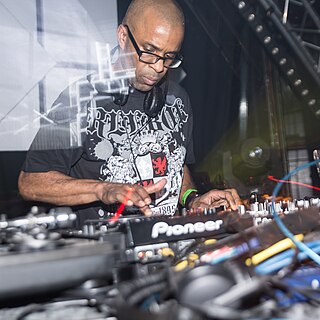
Drum and bass is a genre of electronic dance music characterised by fast breakbeats with heavy bass and sub-bass lines, samples, and synthesizers. The genre grew out of the UK's jungle scene in the 1990s.
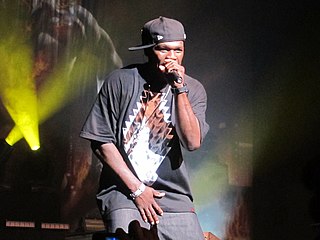
Rapping is an artistic form of vocal delivery and emotive expression that incorporates "rhyme, rhythmic speech, and [commonly] street vernacular". It is usually performed over a backing beat or musical accompaniment. The components of rap include "content", "flow", and "delivery". Rap differs from spoken-word poetry in that it is usually performed off-time to musical accompaniment. It also differs from singing, which varies in pitch and does not always include words. Because they do not rely on pitch inflection, some rap artists may play with timbre or other vocal qualities. Rap is a primary ingredient of hip-hop music, and so commonly associated with the genre that it is sometimes called "rap music".
French hip hop or French rap, is the hip hop music style developed in French-speaking countries. France is the second largest hip-hop market in the world after the United States.
Southern hip hop, also known as Southern rap, South Coast hip hop, or dirty south, is a blanket term for a regional genre of American hip hop music that emerged in the Southern United States, especially in Georgia, Texas, Louisiana, Tennessee, and Florida—often titled "The Big 5," five states which constitute the "Southern Network" in rap music.
The music of Jamaica includes Jamaican folk music and many popular genres, such as mento, ska, rocksteady, reggae, dub music, dancehall, reggae fusion and related styles.
Dub is a musical style that grew out of reggae in the late 1960s and early 1970s. It is commonly considered a subgenre of reggae, though it has developed to extend beyond that style. Generally, dub consists of remixes of existing recordings created by significantly manipulating the original, usually through the removal of vocal parts, emphasis of the rhythm section, the application of studio effects such as echo and reverb, and the occasional dubbing of vocal or instrumental snippets from the original version or other works.
Jungle is a genre of electronic music that developed out of the UK rave scene and Jamaican sound system culture in the 1990s. Emerging from breakbeat hardcore, the style is characterised by rapid breakbeats, heavily syncopated percussive loops, samples, and synthesised effects, combined with the deep basslines, melodies, and vocal samples found in dub, reggae and dancehall, as well as hip hop and funk. Many producers frequently sampled the "Amen break" or other breakbeats from funk and jazz recordings. Jungle was a direct precursor to the drum and bass genre which emerged in the mid-1990s.
Wigger, also wigga, whigger and whigga, is a term for a white person of European ethnic origin who emulates the perceived mannerisms, language, and fashions that are generally stereotypically reserved for African-American culture, particularly hip hop culture. The word is a shorthand variation of "white nigger".
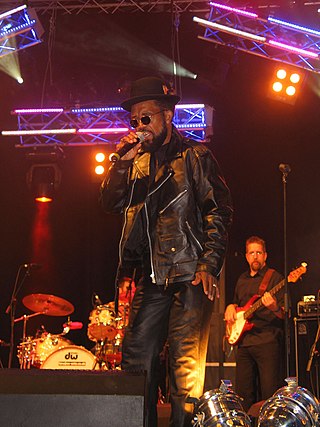
Rude boy is a subculture that originated from 1960s Jamaican street culture. In the late 1970s, there was a revival in England of the terms rude boy and rude girl, among other variations like rudeboy and rudebwoy, being used to describe fans of two-tone and ska. This revival of the subculture and term was partially the result of Jamaican immigration to the UK and the so-called "Windrush" generation. The use of these terms moved into the more contemporary ska punk movement as well. In the UK and especially Jamaica, the terms rude boy and rude girl are used in a way similar to gangsta, yardie, or badman.
Chicano rap is a subgenre of hip hop that embodies aspects of the Mexican American or Chicano culture.
There are several subgenres of reggae music including various predecessors to the form.
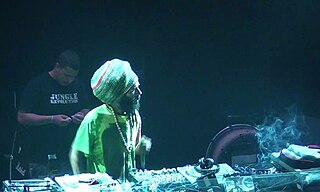
Michael Alec Anthony West, better known as Rebel MC and Congo Natty, is a British jungle producer, spiritual chanter and toaster. He has also gone by aliases including Conquering Lion, Blackstar, Tribe of Issachar, Lion of Judah, X Project and Ras Project.
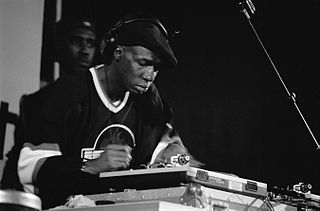
Hip hop or hip-hop is a culture and art movement that was created by African Americans, and Caribbean Americans starting in the Bronx, New York City. Pioneered from Black and Caribbean American street culture, that had been around for years prior to its more mainstream discovery. Hip-hop culture has historically been shaped and dominated by African American men, though female hip hop artists have contributed to the art form and culture as well. Hip hop culture is characterized by the key elements of rapping, DJing and turntablism, and breakdancing; other elements include graffiti, beatboxing, street entrepreneurship, hip hop language, and hip hop fashion. From hip hop culture emerged a new genre of popular music, hip hop music.
The dance halls of Jamaica in the 1950s and 1960s were home to public dances usually targeted at younger patrons. Sound system operators had big home-made audio systems, spinning records from popular American rhythm and blues musicians and Jamaican ska and rocksteady performers. The term dancehall has also come to refer to a subgenre of reggae that originated around 1980.
Drum and bass is an electronic music genre that originated in the UK rave scene having developed from breakbeat hardcore. The genre would go on to become one of the most popular genres of electronic dance music, becoming international and spawning multiple different derivatives and subgenres.
Hip-hop or hip hop is a genre of popular music that emerged in the early 1970s in New York City. The genre is characterized by stylized rhythmic sounds—often built around disco grooves, electronic drum beats, and rapping, a percussive vocal delivery of rhymed poetic speech as consciousness-raising expression. The music developed as part of the broader hip-hop culture; while often used to refer solely to rapping and rap music, "hip-hop" more properly denotes the practice(s) of the entire subculture. The term hip-hop music is sometimes used synonymously with the term rap music, though rapping may not be the focus of hip-hop music. The genre also centers DJing, turntablism, scratching, beatboxing, and instrumental tracks.
Drill 'n' bass is a subgenre of drum and bass which developed in the mid-1990s as IDM artists began experimenting with elements of jungle and breakbeat music. Artists utilized powerful audio software to program frenzied, irregular beats that often discouraged dancing. The style was often interpreted as having a lightly parodic relationship with the dance styles that inspired it.
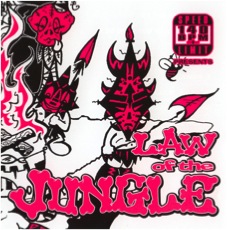
Law of the Jungle is a compilation album of various early jungle music tracks by various artists, released in 1994 in the United States on Moonshine Music. Jungle had started to emerge in the United Kingdom a couple of years earlier but despite its growth, albeit slow, in the United States, no jungle albums were available on the American market. Moonshine conceived the album as a primer for jungle music for American shores, using music from British jungle label SOUR Records, and as a spin-off to their fast tempo techno compilation series Speed Limit 140 BPM+. Law of the Jungle was the first jungle album released in the United States.
Erik Weiss, better known by his stage name Liondub, is an American DJ, producer, and record label owner who specializes in jungle, drum and bass, reggae, dancehall, hip hop and dubstep.